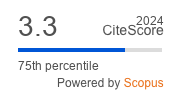Article | Open Access
Three Generations of Intergenerational Transmission of Neighbourhood Context
| Views: | 2928 | | | Downloads: | 1850 |
Abstract: The literature on intergenerational contextual mobility has shown that neighbourhood status is partly ‘inherited’ from parents by children. Children who spend their childhood in deprived neighbourhoods are more likely to live in such neighbourhoods as adults. It has been suggested that such transmission of neighbourhood status is also relevant from a multiple generation perspective. To our knowledge, however, this has only been confirmed by simulations and not by empirical research. This study uses actual empirical data covering the entire Swedish population over a 25-year period, to investigate intergenerational similarities in neighbourhood status for three generations of Swedish women. The findings suggest that the neighbourhood environments of Swedish women are correlated with the neighbourhood statuses of their mothers and, to some extent, grandmothers. These results are robust over two different analytical strategies—comparing the neighbourhood status of the three generations at roughly similar ages and at the same point in time—and two different spatial scales. We argue that the finding of such effects in (relatively egalitarian) Sweden implies that similar, and possibly stronger, patterns are likely to exist in other countries as well.
Keywords: intergenerational transmission; low-income neighbours; neighbourhood; register data; Sweden
Supplementary Files:
Published:
© Lina Hedman, Maarten van Ham. This is an open access article distributed under the terms of the Creative Commons Attribution 4.0 license (http://creativecommons.org/licenses/by/4.0), which permits any use, distribution, and reproduction of the work without further permission provided the original author(s) and source are credited.


